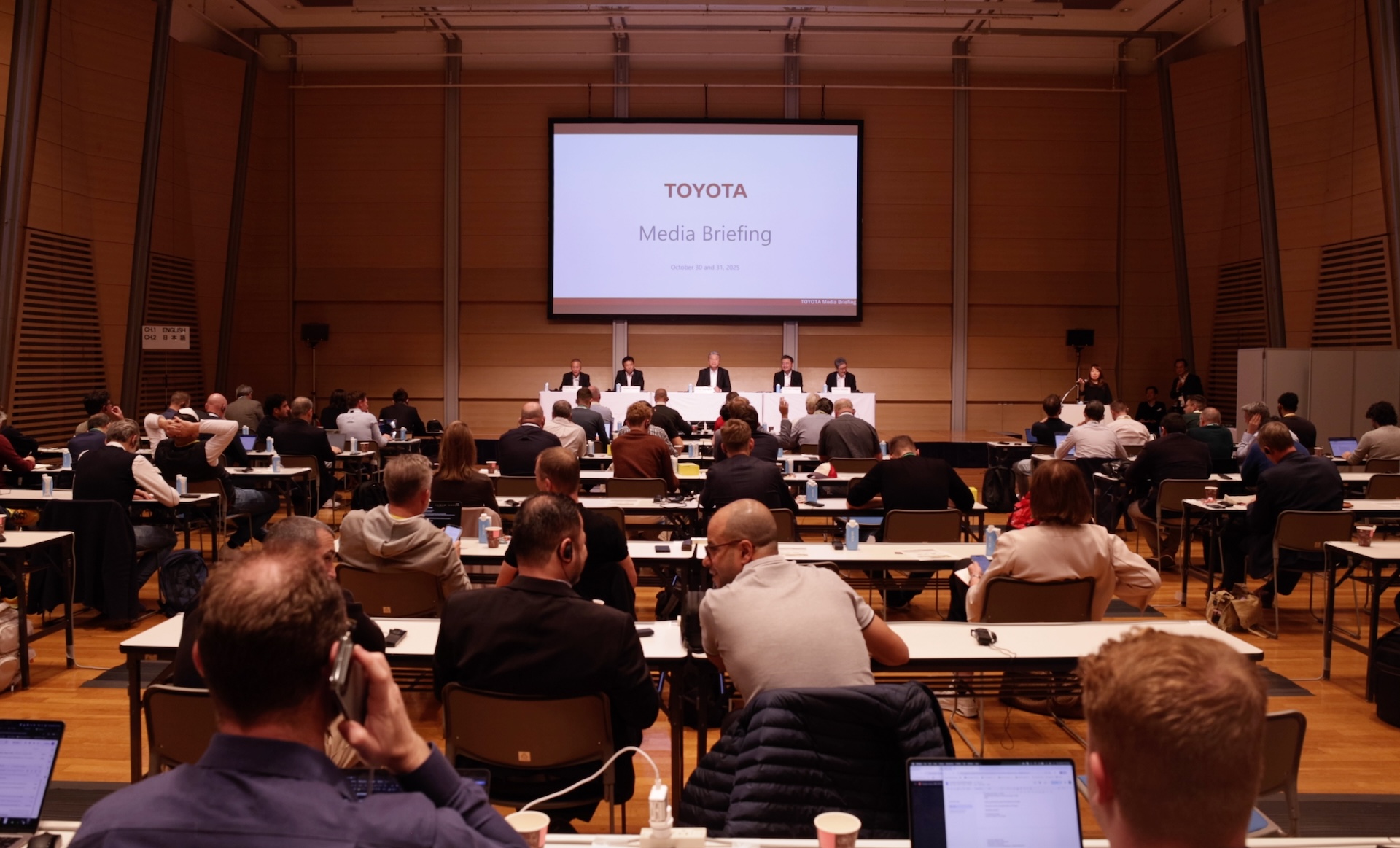In conversation with the five most influential people at Toyota Motor Corporation
Hiroki Nakajima – Executive Vice President & Chief Technology Officer at Toyota Motor Corporation
“Our enemy is not a powertrain, but carbon.”
For Toyota’s CTO Nakajima-san, it’s all about choice. “The energy situation varies by region,” he explains. “That’s why we don’t want to narrow the multi-path way. In Tokyo, we presented the new generation Corolla, suitable for multiple powertrains. We are rolling this concept out further to other models. This is how we remain flexible and competitive.”
On the future of engines, he is clear: “If at all possible, we will continue to build engines until the bitter end. That’s my personal vision.” At the same time, Toyota is betting heavily on battery development. “We make our own batteries. That gives us freedom in design, for example by achieving a lower battery height and more interior space. Moreover, other brands that share our vision can also buy our batteries in the future.”

Takashi Uehara – President Powertrain Company
“The demand for fuel engines remains.”
Uehara emphasizes that Toyota is not giving up on the fuel engine. “There is still a lot of demand for gasoline and diesel engines, especially in regions like the Middle East, Australia and Africa.” He cites a new 1.5-liter four-cylinder gasoline engine with hybrid support as “the optimal engine for the electrification era. In addition, Toyota is working on a 2.0-liter turbo engine that meets future emissions standards, capable of outputs of 294 kW (400 hp) and more than 500 Nm.
The diesel hybrid also remains important. “The Hilux and Land Cruiser already have mild hybrid diesels,” says Uehara. “We continue to develop this technology, even as emissions requirements become more and more stringent. In certain parts of the world, this powertrain remains very relevant. These engines offer plenty of torque and remain indispensable in markets where towing power is more important than range.”
About a range extender, Toyota is cautious. “We are exploring the concept, but there are no concrete plans,” says Uehara. Nakajima laughingly adds: “Just because we are researching something doesn’t mean we will release it. It is purely a study for us, nothing more.”

Keiji Kaita – President Carbon Neutral Engineering Development Center
“Solid-state batteries are no longer a dream, but almost a reality.”
One of the most talked about innovations within Toyota is the All Solid-State Battery (ASSB). Keiji Kaita, responsible for its development, speaks with conviction. “We are working on the next generation of batteries: lower, more compact, with higher energy density and a life span up to four times longer than the current generation.”
According to Kaita, Toyota is on schedule. “We want to introduce the first vehicles with solid-state batteries in 2027 or 2028. Right now we are preparing production facilities and tools. Everything indicates that we are going to meet that schedule.”
The advantages of ASSB go beyond just range. “A solid-state battery takes up less space, making existing platforms suitable for this technology as well. We are developing not only a new platform for ASSB but also a custom architecture for liquid batteries, so that both can coexist.”
Sustainability is at the heart of every step. “We try to minimize the carbon footprint of our batteries. If a battery lasts four times longer, the environmental impact automatically reduces,” Kaita explains. “The materials used are largely the same as conventional batteries, but our focus is on quality and longevity. The longer a battery lasts, the smaller its impact on the environment.”
Kaita also sees potential beyond passenger cars. “For commercial vehicles, ASSB can go a long way, especially since reliability and durability are essential there.”

Mitsumasa Yamagata – President Hydrogen Factory
“Hydrogen is honey for the bee, not the chicken-and-egg story.”
Mitsumasa Yamagata, president of Toyota’s Hydrogen Factory, envisions a world where hydrogen plays a crucial role in energy supply. “Hydrogen can be produced anywhere in the world. That will make countries less dependent on energy imports and increase their self-sufficiency.”
Toyota is working on third-generation fuel cell technology (Fuel Cell System), which Yamagata says is twice as durable and provides 20 percent lower fuel costs. “The system is more compact, cheaper to maintain and particularly suitable for heavy transport.” The biggest challenge lies not in technology, but in infrastructure. “We need to build a global ecosystem where hydrogen production, distribution and use come together. Governments play an indispensable role in this.”
Toyota is now testing hydrogen fuel engines in models such as the HiAce in Australia. “We are seeing promising results there,” Yamagata said. “It is a complex technology because hydrogen combustion is difficult to control, but we are making progress. The first field tests are positive.” He compares hydrogen development not to the traditional chicken-and-egg dilemma, but to something kinder. “Hydrogen and infrastructure are like honey and bee,” he says, smiling. “They attract and reinforce each other. Once the ecosystem grows, adoption accelerates naturally.”

Akihiro Sarada – President Software Development Center
“The Software Defined Vehicle is our weapon against traffic accidents.”
While others focus on energy and powertrains, Akihiro Sarada is looking at the digital future of the car. As president of Toyota’s Software Development Center, he is responsible for developing the Software Defined Vehicle (SDV). “The ultimate goal of SDV is simple: zero traffic fatalities,” says Sarada. “By making vehicles communicate with each other, with infrastructure and with authorities, we can prevent accidents before they happen.”
Toyota is already testing systems in Japan that use AI, satellite links and traffic monitoring. The technology enables real-time communication between vehicles and traffic systems, preventing accidents and improving traffic flow. “When cars know each other’s position and intent, they no longer have to react to emergencies – they prevent them,” Sarada said. In addition to safety, efficiency plays a role. “Smart traffic control also means less congestion, less fuel consumption and less stress. That is not only good for people, but also for the planet.”

Lexus and solid-state batteries
When asked if Lexus as a premium brand will get the scoop on the solid-state battery, Nakajima had to smile, “We are using ASSB in models that are suitable for this technology. Whether that’s Lexus or Toyota, we leave to your imagination. We haven’t decided yet which brand will benefit first.”
What is clear: Toyota is opting for a top-down strategy in which the technology spreads through the models that benefit most from it, regardless of brand. There also remains room for multiple battery chemistries. “NMC, LFP and ASSB will coexist for the time being,” Nakajima-san reports. “Each chemistry has its own advantages, depending on the vehicle type and market.”

Future not one-dimensional
What this interview session does make clear is that Toyota’s future is not one-dimensional. From hydrogen to software to batteries to fuel engines, the brand is taking multiple paths at once. As Nakajima puts it, “Our enemy is not technology, but carbon.”
Solid state battery: start the countdown! – AutoRAI TV


